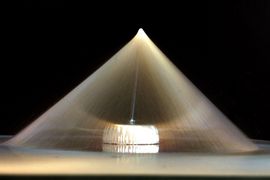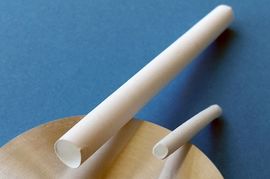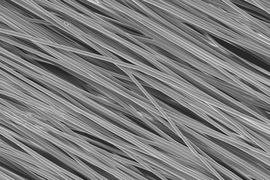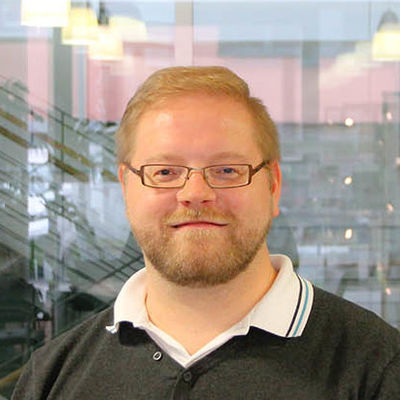Electrospinning is a process for producing polymer fibers from polymer solutions or melts, with diameters of the resulting fibers ranging from a few nanometers to a few micrometers.
In this method, a high voltage of 5 - 100 kV is applied between a nozzle and a grounded collector. This induces charges on the surface of a polymer drop emerging from the nozzle. As soon as the surface tension of the polymer drop is overcome by the applied electric field, a thin liquid jet emerges, which is accelerated towards the counter-electrode. On the way to the counter-electrode, the solvent evaporates (in the case of solution spinning) or the polymer melt solidifies (in case of melt electrospinning) and solid polymer fibers are deposited on the collector.
A wide variety of materials - such as synthetic polymers, biopolymers, polymer alloys, blends and composite materials - can be processed into nano- and microfibers of different morphologies (e.g. smooth, structured, porous). In addition, additives such as nanoparticles, active ingredients, enzymes, catalysts and dyes can be integrated into the fibers. The nonwoven materials produced are characterized by a very large specific surface and high porosity.
On this basis, there are a wide range of technical applications for such nanofiber-based materials in the fields of micro- and optoelectronics, sensor technology, filtration and catalysis. Additionally, drug delivery systems, which can release drugs into the body in a targeted manner, as well as artificial tissue structures for tissue engineering, represent particularly interesting possibilities of medical applications for electrospun materials.
We are able to produce nonwovens consisting of micro- and nanofibers up to a nonwoven size of 400 cm2 from various conventional polymers (e.g. polyurethanes, polyesters and silicones), as well as from a variety of biopolymers with different additives, by means of dissolving or melting processes. Our department generates state-of-the-art electrospun tubes and other 3D shapes, porous fibers, multi-fiber fleeces and materials with coaxial as well as oriented fibers. With suitable process parameters, fiber thicknesses can be adjusted to between 40 nm and 15 µm .
Our department investigates the degradation behavior and release of active agents under physiological conditions - as well as the cytocompatibility with different cell lines - in order to characterize nonwovens, and determine fiber properties (light microscopy, SEM, EDX, XPS and mechanics), for use in the medical field.








